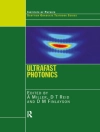Challenges in Mechanics of Time-Dependent Materials, Mechanics of Biological Systems and Materials, and Micro-and Nanomechanics, Volume 2 of the Proceedings of the 2021 SEM Annual Conference & Exposition on Experimental and Applied Mechanics, the second volume of four from the Conference, brings together contributions to this important area of research and engineering. The collection presents early findings and case studies on fundamental and applied aspects of Experimental Mechanics, including papers in the following general technical research areas:
Characterization Across Length Scales
Extreme Conditions & Environmental Effects
Damage, Fatigue and Fracture
Structure, Function and Performance
Rate Effects in Elastomers
Viscoelasticity & Viscoplasticity
Research in Progress
Extreme Nanomechanics
In-Situ Nanomechanics
Expanding Boundaries in Metrology
Micro and Nanoscale Deformation
MEMS for Actuation, Sensing and Characterization
1D & 2D Materials
Cardiac Mechanics
Cell Mechanics
Biofilms and Microbe Mechanics
Traumatic Brain Injury
Orthopedic Biomechanics
Ligaments and Soft Materials
Inhaltsverzeichnis
Chapter 1. Advance of Collaborative Twinning Fields in Magnesium AZ31 via the Strain and Residual Intensity Channels in Microscopic Image Correlation.- Chapter 2. Time Dependent Materials Response of Transverse Impact on Model Beams.- Chapter 3. Wearable Device for Tremor Suppression.- Chapter 4. Fractional Viscoelastic Modeling Enabling Accurate Atomic Force Microscope Contact Resonance Spectroscopy Characterization.- Chapter 5. A Method for Measuring Displacement and Strain Around a Crack of Rubber Sheets Using Digital Image Correlation.- Chapter 6. Understanding the Nano-scale Deformation Mechanisms of Polyurea from in-situ AFM Tensile Experiments.- Chapter 7. Porosity Determination and Classification of Laser Powder Bed Fusion Al Si10Mg Dogbones Using Machine Learning.- Chapter 8. Constitutive Modelling of the Dynamic Behavior of Cork Material.- Chapter 9. The Penetration Dynamics of a Violent Cavitation Bubble through a Hydrogel-water Interface.- Chapter 10. Effects of Hydration onthe Mechanical Response of a PVA Hydrogel.- Chapter 11. Gaussian Process to Identify Hydrogel Constitutive Model.- Chapter 12. Effect of Host Surface Factors on Biocompatible Adhesion Index.- Chapter 13. Mass Mitigation in Structural Designs Via Dynamic Properties.- Chapter 14. High Temperature Burst Creep Properties of Nuclear-grade Fe Cr Al Fuel Cladding.
Über den Autor
Dr. Alireza Amirkhizi University is with the Massachusetts- Lowell , USA; Dr. Jacob Notbohm is with the University of Wisconsin-Madison, USA; Dr. Nikhil Karanjgaokar is with the Worcester Polytechnic Institute, UM, USA; and Dr. Frank Del Rio is with the National Institutes of Standards and Technology, Boulder, CO, USA.












